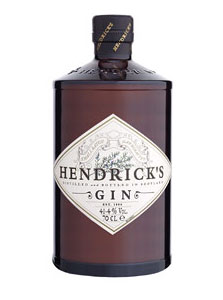 As all true gin lovers know, every brand of premium gin has its own complex and sophisticated range of aromas and tastes. Partly that is to do with the different botanicals used in the recipe. Juniper is always present (the legal definition of ‘distilled gin’ specifies that it must contain juniper berries) but there are well over one hundred botanicals that can be used in gin recipes and different botanicals will impart subtly different flavours to the final product.
As all true gin lovers know, every brand of premium gin has its own complex and sophisticated range of aromas and tastes. Partly that is to do with the different botanicals used in the recipe. Juniper is always present (the legal definition of ‘distilled gin’ specifies that it must contain juniper berries) but there are well over one hundred botanicals that can be used in gin recipes and different botanicals will impart subtly different flavours to the final product.
Equally important is the precise manner in which the gin is made and all premium brands have their own production processes that allow them to achieve the required quality, flavour and brand consistency. With this in mind Gintime recently travelled to Hendrick’s Distillery on the Ayrshire coast of Scotland to find out what lies behind the extraordinarily smooth taste of one of our favourite Movers and Shakers. Our visit was entertaining and informative and we certainly learned a great deal more about the distinctive character of Hendrick’s Gin even though not all was revealed.
Girvan, where Hendrick’s Distillery is located, is the site of William Grant’s spirit production plant where over 55 million litres of grain whisky and grain neutral spirit are made every year for use in blended whisky, vodka and, of course, gin. As you would expect it’s a high tech spirit factory with massive two 8 column stills turning out extremely high quality clean spirit. Turn the corner into the Gin Palace and it’s a whole other world.
Some years ago, when William Grant & Sons decided to apply their whisky expertise to the production of a new gin, the brief was to come up with a super premium that would be lighter and less juniper dominated than other gins on the market. Cucumber and roses, the traditional tastes of English summer, was to be the starting point. For months the New Liquid Development team worked in the lab, endlessly experimenting with different botanicals in the quest to get the right balance. It’s not easy, as even minute quantities of a particular ingredient can alter the entire taste spectrum. After much trial and error they arrived at the final botanicals – juniper, orris root, angelica, coriander, lemon and orange peel, caraway seeds, chamomile flowers and meadowsweet with the addition of distilled oils of cucumber and the Bulgarian rosa damascena . But ingredients are only half the story. It’s the proportions of ingredients that are the real recipe and that remains a secret kept under strict lock and known to only three people.
Having developed an unusual recipe, it’s not surprising that William Grant’s should adopt an unusual approach to the distillation of their new product. Unlike any other gin Hendrick’s is small batch, craft distilled using two different methods – pot still and infusion. (Click to How Gin is Made for more detailed information on these methods). In the former a quantity of botanicals and neutral grain spirit is placed in the distillery’s lovingly preserved Bennett pot still, dating from the 1860s, where it is gently ‘boiled’ in the traditional way. A specially adapted Carter head still, one of only four in the world, is used for the infusion method. Here the botanicals are carefully layered in copper baskets at the top of the still and the spirit in vapour form picks up the different flavours as it travels through. Think of the different results you get when you steam vegetables and that is the effect – cleaner, more subtle flavours. The two distillates are then combined.
Unfortunately we could not persuade our guide to reveal exactly what are the percentages of pot distilled to infusion distilled. That too is part of the secret recipe but the combination of the strong, aromatic flavours achieved in a pot still with the more subtle, volatile flavours picked up in the Carter head is obvious in the final taste of the Hendrick’s product. In both methods the gin that comes off the stills is super concentrated and has to be mixed with neutral grain spirit to restore the original proportions of botanicals to alcohol as specified by the Hendrick’s recipe. Cucumber and rose distillates are then added and the whole is reduced to the 41.4 % abv bottling strength by adding water. Then it’s ready to be enjoyed.




